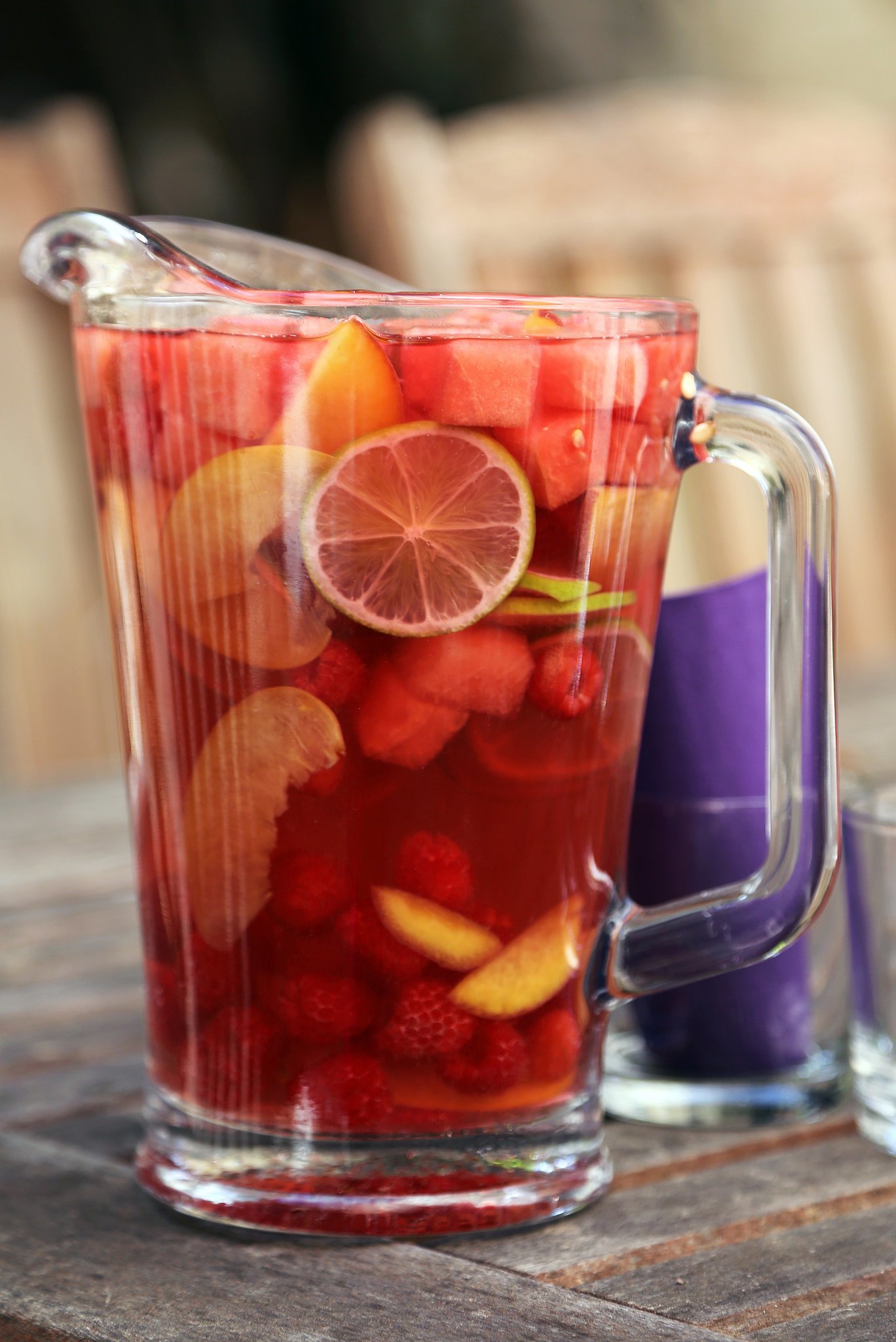Olé! It’s Sangria Day!!
Unless you track the yearly wine holidays as nerds like me do, you probably didn’t know that December 20th is “National Sangria Day”! If you are looking for a refreshing and fruity drink to enjoy on a sunny (or even winter) day, you might want to try sangria, the popular Spanish wine punch. But do you know the history of sangria and how it became a symbol of Spain? In this article, I’ll explore the origins, variations, and recipes of this delicious drink.
The history of sangria goes back to ancient times when the Romans conquered the Iberian Peninsula and planted vineyards there. Since water was often unsafe to drink, they mixed it with wine, herbs, and spices to kill the bacteria and improve the flavor. This was called "hippocras" and it was also common in Greece and England. The name "sangria" comes from the Spanish word for "bloodletting", which was a medical practice that involved draining blood from a patient. The name refers to the dark red color of the drink, which was traditionally made with red wine and citrus fruits. Sangria was also sometimes heated like mulled wine, especially in winter. Sangria became more popular in Spain after the end of the Moorish rule in 1492, when wine production resumed. Different regions developed their own versions of sangria, using local fruits and wines. For example, in Andalusia, they used sherry and peaches, while in Catalonia, they used cava and apples. Sangria was also made with white wine or sparkling wine, and sometimes called "zurra" or "clarea".
Sangria was introduced to the Americas by the Spanish colonists in the 18th and 19th centuries, but it did not gain much attention until the 1964 New York World's Fair, when the Pavilion of Spain served it to visitors. Since then, sangria has become a popular drink in the US and other countries, with many variations and adaptations. Today, sangria is still a symbol of Spain and its culture, especially in summer. It is often served in bars and restaurants, as well as at home. According to European law, sangria must be made in Spain or Portugal and have less than 12% alcohol by volume. However, some would say the best sangria is homemade, using fresh ingredients and your favorite wine. (I myself favor the Sangria from Castillo de Feliciana Winery here in the PNW!)
Castillo de Feliciana, located in the Walla Walla Valley of Washington State, produces a variety of wines inspired by the Spanish heritage of its founders. One of their most popular products is the sangria, which is a blend of red wine, fruit juices, and spices. The sangria made by Castillo de Feliciana is based on their own Tempranillo wine, which is a full-bodied red wine with aromas of cherry, plum, and vanilla. They add natural orange and lemon juices, as well as cinnamon and clove, to create a balanced and refreshing sangria that is not too sweet or too tart. The sangria has an alcohol content of 10%, which makes it perfect for sipping on a hot day. Despite my repeated attempts, they have never told me exactly how it’s made, so it keeps me coming back for more, sold throughout the summer until October, when they make a pink variety to support breast cancer awareness! Due to it’s extreme popularity, there is a website dedicated to sangria purchases from Feliciana! Sangria FAQ - Castillo De Feliciana
If you want to make your own sangria, here are some tips and recipes to get you started:
- Choose a dry and fruity wine, such as Tempranillo, Garnacha or Rioja for red sangria, or Pinot Grigio, Sauvignon Blanc or Albariño for white sangria.
- Add some orange juice or lemonade to sweeten and balance the wine. You can also use sugar or honey if you prefer.
- Cut some seasonal fruits into small pieces and add them to the wine mixture. You can use oranges, lemons, limes, apples, pears, peaches, berries, or any other fruit you like.
- Add some spices or herbs for extra flavor. You can use cinnamon sticks, cloves, star anise, nutmeg or vanilla for red sangria, or mint leaves, basil leaves or rosemary sprigs for white sangria.
- Refrigerate the sangria for at least 4 hours or overnight to let the flavors infuse.
- Before serving, add some ice cubes and some sparkling water or soda to make it fizzy. You can also add some brandy or liqueur for a stronger kick.
- Enjoy your sangria with some tapas or paella for a true Spanish experience!


